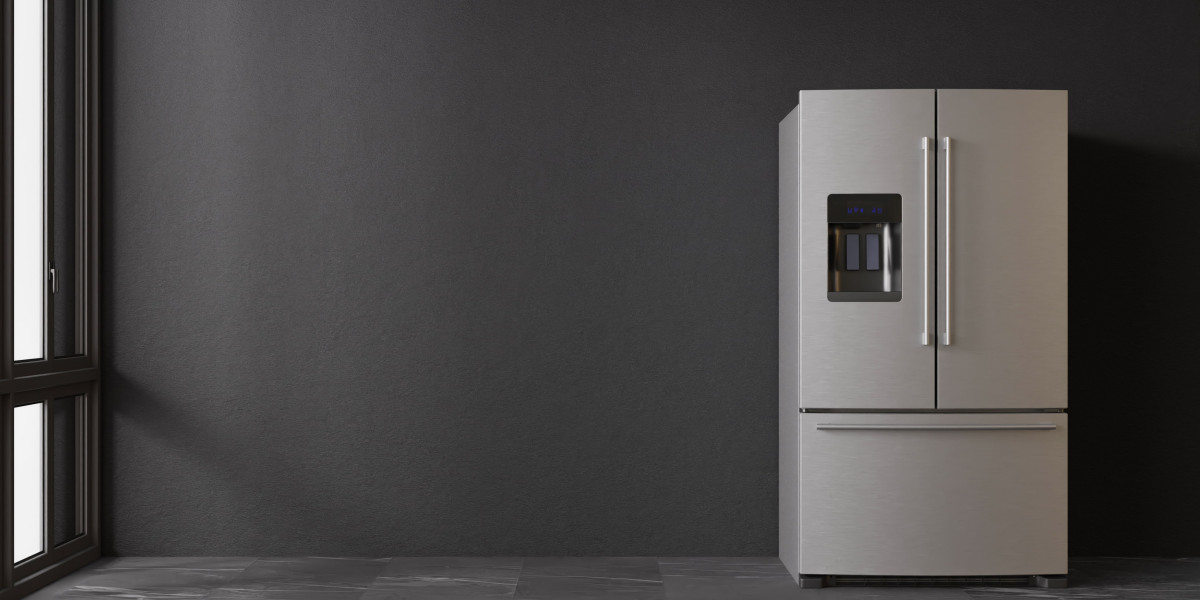How to Choose a Refrigerator
Refrigerators are kitchen appliances used to keep food and beverages cold. They are commonly used in homes and in hotels, offices, and college dorm rooms.
Some refrigerators have smart features, such as cameras and sensors. Others have touchscreens to let you watch videos, look up recipes, look up family calendars and shopping lists or leave notes for family members.
Control of Temperature
The ideal temperature for your refrigerator ensures food safety and prevent the food from spoiling. This is particularly important for foods like eggs and milk, which can quickly turn rotten when exposed to temperatures outside but remain stable in the refrigerator. Refrigerators can also be used to store pharmaceuticals like drugs or vaccines that become less effective with time. Refrigerator monitoring systems are in place to ensure that an medical laboratory or medical facility maintains a safe cold chain.
A refrigerator's internal thermal insulator keeps its contents cooler than surrounding air. It utilizes an energy source to transport warm air out of the refrigerator into an insulated storage compartment where it gets extremely cold. The refrigerator is equipped with a control system that activates the cooling system if its internal temperature is higher than a predetermined threshold. This stops the growth of bacteria inside the refrigerator.
Each zone of the fridge is specifically designed to serve a certain purpose. The bottom shelves are ideal for storing perishable items such as fresh vegetables and meats which require the most low temperatures to preserve their taste and texture. The shelves should be kept clear to allow cool air to circulate through the refrigerator. Store soft cheeses and cured foods in a separate drawer for deli for the perfect charcuterie platter.
Some refrigerators have doors made of stainless steel or glass to protect the interior. They also make it easier to clean. Some refrigerators also include doors that are alarms that can be programmed to warn you if the freezer or fridge doors are left open for too long. You can program them to alert multiple people, and in increments based on your needs. You can set them up to send temperature graphs via email or text.
Most refrigerators have built-in thermometers however, for those that don't, an independent appliance thermometer can be a cheap method of monitoring the temperature of the freezer and refrigerator. It is essential to check the refrigerator and freezer temperature frequently, particularly in the event of a power failure or if the temperature settings are altered manually. The ideal temperature for the refrigerator and freezer is 40 degrees Fahrenheit.
Storage Capacity
The capacity of your refrigerator is a key aspect to consider when selecting the model that best suits your needs. There are a variety of sizes to choose from, ranging from small refrigerators that have a capacity of less than 15 cubic feet to large models that accommodate more than 26 cubic feet. To figure out the size you need, consider your family's cooking habits and the number of people who live in your home. For two people the average of between 11 and 13 cubic feet of refrigerator space is enough, while 18 to 22 cubic feet is recommended.
In addition to considering the space inside, look at the depth of your fridge. Some models are larger than others to allow them to fit in small spaces and not take up too much space under your counters. Cabinet-depth refrigerators are another option, and have the depth being roughly the similar to the standard kitchen cabinet front (though handles may protrude slightly further). These can be a good option for kitchens where counter space is at a premium and also appear more stylish than traditional fridges.
When you are shopping for a new refrigerator, ask about its noise level and energy consumption. There are many manufacturers that offer quieter options for residential use, while certain models consume less energy than comparable models. You can find the energy consumption average of a model by checking the yellow Energy Guide label. Test the model by opening and closing its doors.
Most modern refrigerators include a pantry drawer, which is a full-width area with separate temperature controls that can be used to store various objects. These drawers are particularly useful to store party trays and wine, as they allow you to keep them at specific temperatures. Based on the model, these drawers could have pre-programmed settings for wines as well as deli meats, soft drinks.
Energy Efficiency
Refrigerators use a lot of electricity. It is therefore important to choose a energy-efficient refrigerator. The good news is that refrigerators have improved in energy efficiency in the past. The insulation, motors and magnetic door seals of a modern refrigerator use less energy than a previous model of the same size. It is possible to cut down on the refrigerator's electricity consumption even further by purchasing a highly energy efficient model. A refrigerator with an Energy Star rating will use less energy than a model 10 years old or older.
It is important to consider energy efficiency for those who have limited access to electricity grids. For homes that are not connected to the grid, refrigerators are typically among the most expensive appliances. Their high energy consumption also means that they require large systems of solar home systems that are not affordable for families earning less than $2 per day. The annual energy consumption of a refrigerator is therefore a crucial factor in determining whether it is affordable for consumers to purchase and operate (PATH and WHO 2013; McCarney et al, 2012).
We will start by explaining the basic refrigeration process. A refrigerator cools itself by pushing refrigerant liquid through a sealed system. It begins as a liquid, and goes through the compressor, which reduces it to the form of a vapor. This vapor flows into coils outside the refrigerator, and draws heat out of it. It then cools before returning to liquid. This process repeats many times, keeping the food cold while the vapor flows through the coils.
Refrigerators are one of the most expensive appliances that consumers who live off grid can buy, but improving their energy efficiency will make them more affordable. By cutting down on the amount of energy they use the refrigerator can be powered by a smaller SHS and reduce overall system costs for consumers. Energy savings vary depending on the size, design and features of a refrigerator. Ice-makers and water dispensers through the door, for example can be costly, but can increase the energy consumption of the refrigerator, which increases the amount of SHS required to run it.
Maintenance
Regular maintenance and inspections can significantly increase the life expectancy of your refrigerator. Check the condenser unit, defrost drain and ice maker. Also, make sure you check the seals on the door. Cleaning and replacing water filters is essential. These simple maintenance tasks will ensure the longevity of your refrigerator as well as save money on your energy costs.
The easiest and most effective refrigerator maintenance task is to clean the inside of your refrigerator on a regular basis. This includes throwing away old food items and wiping down shelves as well as walls, crispers, and inside the doors of your freezer and refrigerator. This will prevent unpleasant odors as well as reduce the risk of food-borne illnesses. It is also recommended to regularly check the temperature of your refrigerator with the help of a thermometer for your fridge Freezer for sale Near me. If your refrigerator is not properly maintained could be subject to temperature fluctuations that can lead to food spoilage and an increase in your electricity bill.
The condenser coils of your refrigerator are also required to be cleaned every two years. This will eliminate any dirt, grime, hair or other debris that may have accumulated. These coils, which are actually radiators that help to remove heat from the refrigerator, are located at the bottom or back of your appliance. If they are dirty, they can't dissipate heat effectively and your refrigerator will use more energy to run.
Check the seal on your refrigerator that is designed to create an airtight seal between the fridge and the ductwork that runs through your home. It is crucial to keep your fridge's contents cool. However, over time, the seal may be damaged by greasy fingerprints and sticky syrups. Clean the seal of your fridge with a an abrasive towel to keep it in good condition.
In the end, it's a good idea to clean the drip pan, which is normally situated under the compressor unit. The pan is used to collect the water that is drained from the defrost cycle of the refrigerator. It is recommended to clean it regularly to prevent the development of mold and unpleasant odors.








